Watering Cannabis

One of the most common mistakes of beginner cultivators is underestimating the techniques and details that go into watering cannabis. There’s a lot of know-how involved in the type of water you should use, how often you should water and how to spot when you’re doing something wrong. While the art of watering cannabis is definitely not an exact science, this article will break down everything you need to know about how to effectively water your plants!
What Type Of Water Should I Use?
Isn’t water just… water? For cannabis cultivation purposes, it most certainly isn’t, and ensuring the use of the correct water will result in a massive payoff in the health of your plants!
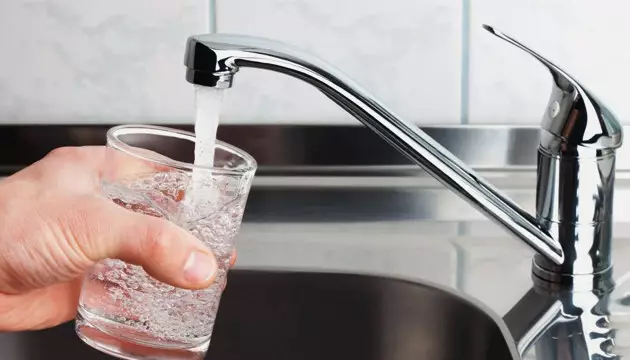
Tap Water
This type of water is easily available and therefore most commonly used to water plants. Tap water is suitable for cannabis cultivation purposes only if the Electrical Conductivity (EC) is under 0.4, which can easily be measured with an EC meter. If your EC value is higher than this, it’s in your best interest to invest in some osmosis water or an osmosis system. Higher EC values are found in ‘hard’ water, which is often filled with minerals that aren’t beneficial for your plants and can sometimes have negative effects.
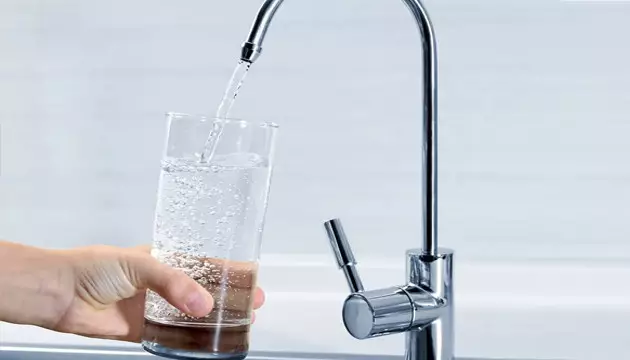
Osmosis Water / Osmosis System
Osmosis water can easily be found in pet supply shops, although osmosis systems themselves can be a little more difficult to come by and might be a bit more of an investment. However, they allow you to filter the unwanted minerals out of your tap water, leaving you with pure water that is perfect for watering your plants.
Rainwater
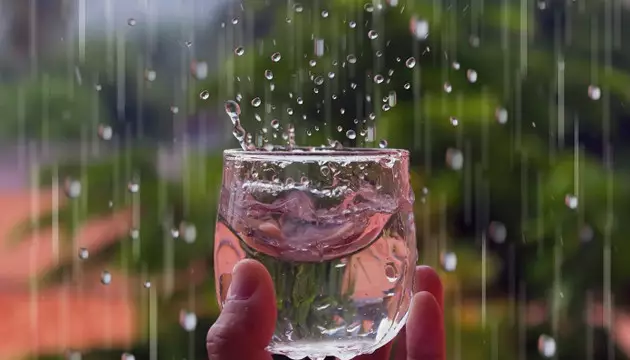
This is another good choice if you’re unable to use tap/osmosis water, and has the great additional benefit of being environmentally friendly! One thing to keep in mind is that although rainwater is very pure, it can contain small amounts of bacteria, eggs or fungi spores that you definitely don’t want to pour into your grow medium. An easy solution is to microwave rainwater for a few seconds before you use it, which should sterilize it and make it ready for use.
Note: whichever water type you decide to use must be supplemented with the appropriate nutrients that your plants require depending on which stage of growth they’re in (seedling, vegetative or flowering). The only exception is if your growing medium of choice is super soil, in which case no extra nutrients are necessary.
Importance Of pH In Watering Cannabis
pH is a very important factor in the watering of your cannabis plants, as the pH level of water tells you how acidic or alkaline it is. This is significant, as your plants have a specific ‘window’ of pH in which they will happily absorb the nutrients that are added to help them grow. Outside of this window, you might as well have not bothered adding them in the first place – this is known as nutrient lockout.
How Much Water Do I Need?Remember, adding nutrients to your water will affect the pH levels, so measure the pH after adding your nutrients. If the pH reading falls outside of the desirable range, this can be easily fixed using pH Up or pH Down solution – an essential in every cannabis cultivator’s toolkit!
As a general rule, the total amount of water that plants need to grow and bloom to their full potential is at least a quarter of the total volume of the pot or container the plant is held in. Some plants may need a little more than this depending on the following factors:
Growing Medium
Using soil as a growing medium can result in the need for more water per irrigation, as it tends to have better retention and worse drainage in comparison to soilless mediums or soils that are mixed with coco coir. If you’re using super soil, you’ll need the least amount of water. This is because as all your nutrients are held inside the medium, you don’t want to run the risk of them being carried out of the container. Water just enough to get the medium thoroughly wet with minimal runoff water.
Plant Size
As you’d expect, the bigger the plant, the more water it will need to keep healthy and continue to grow. You’ll need to adjust your watering quantity through the entire cultivation period, and this may take some trial and error. If you water your plant and the medium remains wet to the touch even after 3-4 days of irrigation, try using less water next time!
Pot Size
This often goes hand in hand with the above – the bigger your container, the more water you’ll need to keep your plant properly hydrated. Remember, you need to use at least a quarter of the total volume of the container, but you may use more as necessary. Either way, it’s very important to have an appropriately-sized container relative to the size of your plant to prevent overwatering.
Outside Temperature
Plants grown in hotter climates are definitely thirstier than those grown in colder ones. If it’s really warm outside, you may need to use more water per irrigation, or you can water more often than usual. Be sure to check the humidity too, since if humidity is rising alongside outside temperatures, you might not need to use additional water.
When Should I Water My Plants?
So how do you know when your plants are feeling thirsty? Here are a couple of the most common methods used to help you decide:
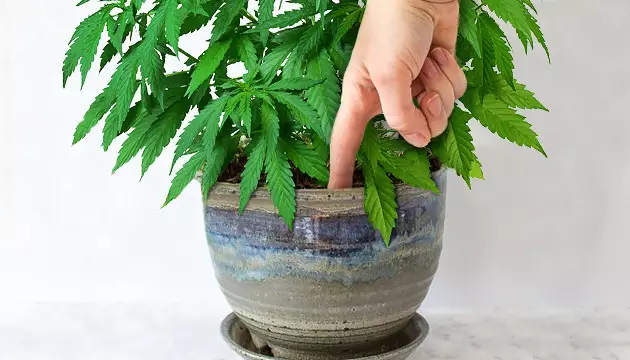
Does your grow medium feel dry to the touch?
Put your finger one knuckle deep into your medium. Does it feel dry? If so, that probably means it’s time to water. This is more relevant for soil or soil mixed with perlite mediums. A pure coco coir medium doesn’t require the top layer to be completely dry before the next watering.
Does your container feel light?
This is probably the most popular method used by indoor cannabis cultivators around the world. Every time you water your plants, they absorb all of the water and nutrients, and the container feels much heavier as a result. As your plant begins to uptake the water, your container will get lighter and lighter – this is a good indication that it’s time to water again. Getting a feel for how ‘light’ is light enough comes with experience. However, a great tip for beginner cultivators is to have a container filled with just your medium – this is roughly how light your plant container should be when it is completely dry.
Does your plant look thirsty?
This is for more extreme cases of very thirsty plants. If they haven’t been watered in a while, they will begin to wilt and droop, with the leaves taking on a very dry appearance and possibly even beginning to turn yellow or brown.
Cannabis Watering Technique
For the actual irrigation, it’s important to water your plants slowly. Move your watering bottle/can in a smooth circular motion, adjusting the flow of the water depending on how quickly your medium absorbs. This technique stimulates the development of a healthy root system and ensures that your entire medium is thoroughly soaked with no concentrated dry areas. Continue to water until the water begins to run out through the drainage holes in your container, thus ensuring that any previous unabsorbed nutrients left in your medium are washed out. This will prevent nutrient lockout and pH problems.
How Often Should I Water My Plants?
The frequency of irrigation is something that should be adjusted based on whether your plants seem like they need to be watered, as discussed above. Generally, cultivators will water every 3-6 days. However, this is further affected by your plant’s stage of growth.
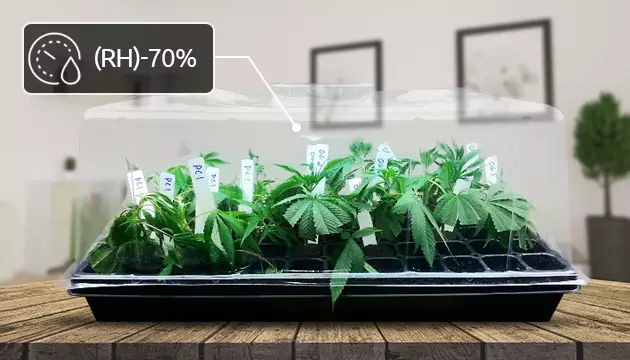
Seedling
At this early stage of growth, water should be used with great caution. A minimal amount of water is required for the small rooting cubes/coco pellets used for seedlings – just enough to keep them moist. Humidity is key here, with a recommendation to place seedlings in a propagator to maintain 70% relative humidity (RH). You can also use a spray bottle to lightly mist your seedlings in order to help with humidity and moisture.
Vegetative
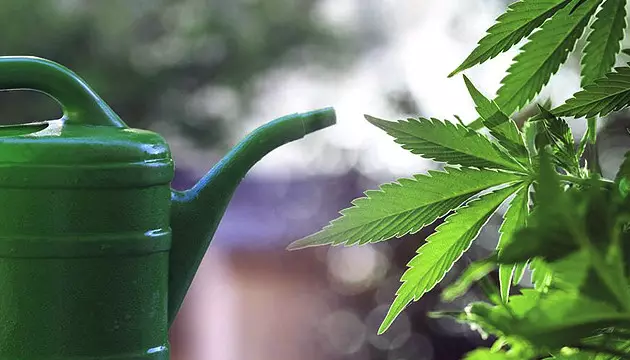
At this point, your plant will likely be in its final container, or at least a much bigger container than a rooting cube. Hopefully, you will have begun to notice patterns in how well your plants respond to watering and adjusted accordingly. At this stage, it’s best to use the tips described in the ‘When Should I Water My Plants?’ section to help you decide if watering is necessary. However, as a general rule, cultivators growing in soil will usually be watering anywhere between 1-3 times a week, whereas soilless or other mediums may require watering as often as every 2 days.
Flowering
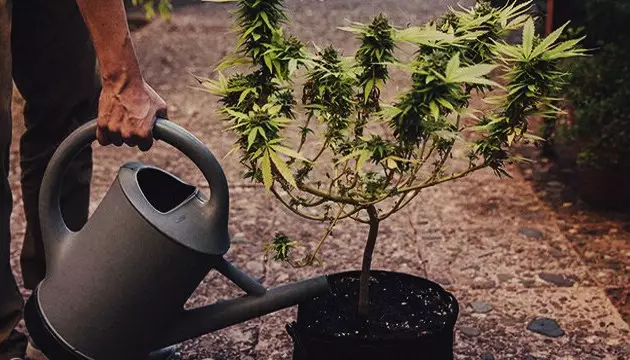
In this phase of growth, cultivators will have switched to a 12/12 light schedule and the plants will most definitely be in their final containers. Specific ‘blooming’ nutrients are added to the water and all cultivators, regardless of their medium of choice, can expect to be watering more regularly – up to 4 times a week! In the late blooming period, it’s recommended to flush your plants with pure water or a flushing solution. This removes any remaining nutrients within the medium that could spoil the final taste of the almost-ready buds. This is done by either doubling the total volume of water used in the final week or by gradually flushing over a 2-week period.
The Importance Of Drainage

Overwatering is one of the easiest mistakes to make as a beginner cultivator, which can have pretty drastic consequences if not dealt with properly. One of the easiest ways to prevent overwatering is by ensuring your containers have good drainage! This will mean that water can flow through the medium and container easily, preventing waterlogging and root rot.
Make sure your container has holes to allow water to run out freely with every irrigation. Many cultivators use drainage trays, allowing them to collect the runoff water without making a mess in their tent. Make sure the plants aren’t able to sit in the runoff for long, as this can allow bacteria to fester and prevent aeration of the roots. Another way to increase drainage is by adding perlite to your medium, which can loosen your medium and allow for both efficient retention and drainage. As an added bonus, it’s a neutral substance, so you don’t need to worry about it affecting your pH or nutrients.
How To Recognise Over And Underwatering
Learning to recognize the signs of over and underwatering is essential to be able to treat your plants before any long-lasting consequences occur.
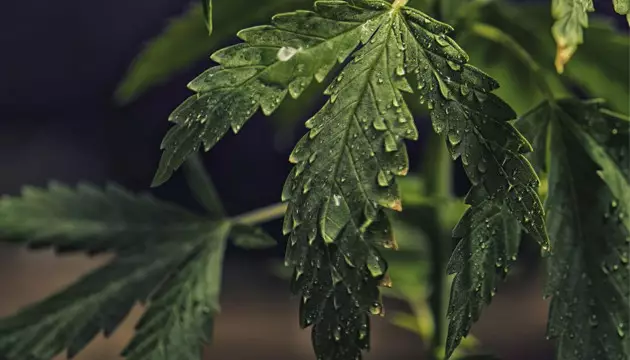
Overwatering
- Leaves will have a drooping and/or curling appearance.
- Leaves appear firm and deep green, curled all the way to the stem.
- Continued issues will lead to yellowing and potential root rot.
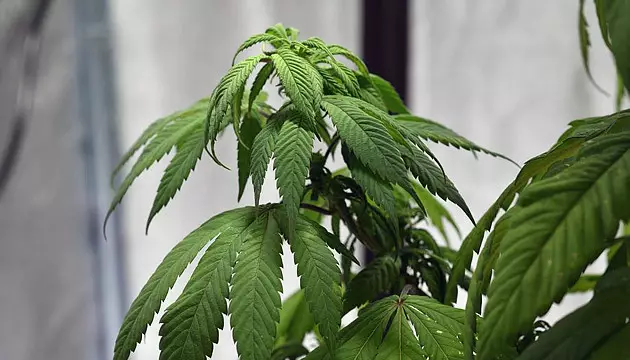
Underwatering
- Leaves will have a wilted, droopy appearance.
- Leaves appear dry, crisp and lifeless.
- Continued issues may result in plant death.
How To Solve Over And Underwatering
Overwatering
Restraint is the required skill for this one – don’t water your plants until the medium is bone dry. When the time comes for the next irrigation, only water by the minimum amount – a quarter of the total volume of the container. If you’re really worried, you can weigh your container when your plant is completely dry, and don’t water again until the weight matches the ‘dry’ weight.
Underwatering
You’ve probably guessed that the solution here is to… water your plant! The best practice is to still only use the minimum amount, as you don’t want to overshoot and end up overwatering. Keep a close eye on the plant, as you may need to water again more frequently.
Top Tips For Watering Cannabis
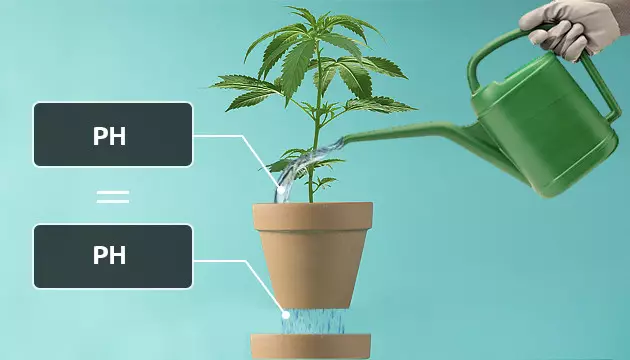
Measure the pH of your runoff water as well as the irrigation water. This will give you a good indication of whether your medium is actually at the right pH.
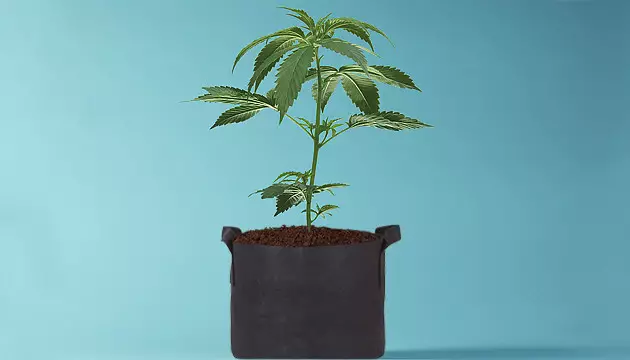
Use Smart Pots to help with aeration and drainage. These felt pots can be really useful to allow your plants to breathe, as well as regulate the temperature of the medium. Keep an eye out, as the medium is also prone to dry out quicker than when normal containers are used.
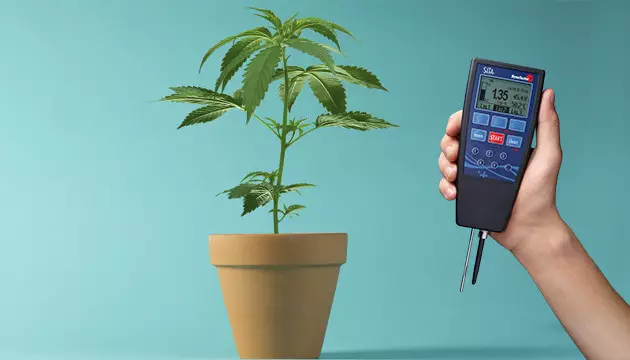
Consider investing in a tensiometer if you’re really struggling with deciding whether your plants need a watering or not. Having a numerical indication can take away a lot of the guesswork and stress for a beginner.
Don’t stress! Watering cannabis, just like growing cannabis, is as much an art as it is a science. Follow these recommendations and as you become more experienced, all of this will become second nature.
Herbies Head Shop expressly refuses to support the use, production, or supply of illegal substances. For more details read our Legal Disclaimer.





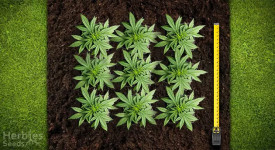


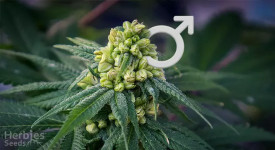
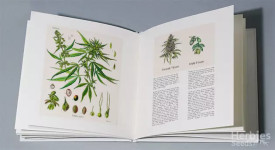
Thank you for leaving a comment for us!
Your feedback will be posted shortly after our moderator checks it.
Please note that we don’t publish reviews that: